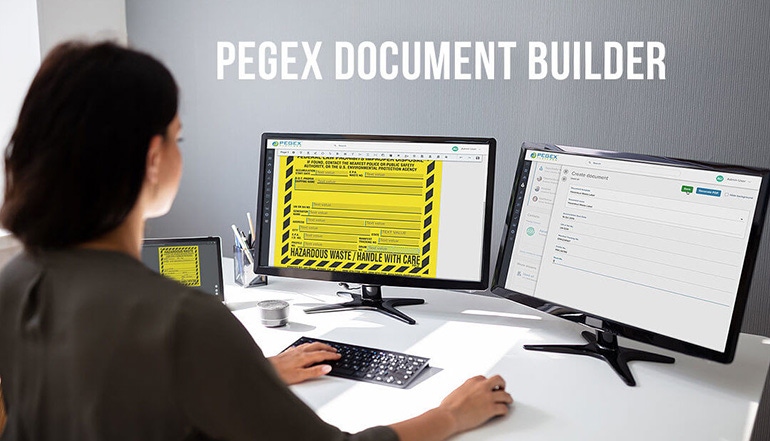Eric Apfelbach, president and CEO of PegEx, discusses how the company’s new Document Builder can impact the waste and recycling industry.

A Madison, Wis.-based hazardous waste broker has introduced an addition to its cloud platform that will help the waste management industry move to a digital workflow system.
PegEx Inc. has launched its Document Builder, which generates digital versions of the documents waste management companies use, like hazardous waste labels, regulatory forms, shipping forms, manifests, bills of lading and service agreements.
The Document Builder is part of the PegEx Platform launched in 2018, a cloud software as a service system that enables waste and chemical companies to capture the benefits of a digital transition.
Waste360 recently sat down with Eric Apfelbach, president and CEO of PegEx, to discuss the new Document Builder and how it can impact the waste and recycling industry.
Waste360: What is the new Document Builder?
Eric Apfelbach: Instead of using static paper-based forms, the Document Builder generates digital versions of the documents waste management companies use every day.
Since much of the information needed to complete these forms exists in the PegEx Platform as part of the electronic record, these documents can be quickly generated without having to re-enter the same information. For instance, any form or label currently using a paper-based manual workflow can be easily transformed into a digital document.
Waste360: How does it work?
Eric Apfelbach: The Document Builder works by taking data that an organization is collecting during its normal business operations and storing it in our secure cloud-based platform. Once that data is stored in the PegEx Platform, the Document Builder can then leverage that data and output it to business or regulatory documents that are configured within the PegEx Platform.
Behind the scenes, our enablement team will configure an organization’s documents in our database and apply what we call overlays to that document to essentially tell the system where the data is pulled from and where it should be outputted on that document.
Once that is set up, users in the system can merely access that document within the platform and produce a PDF that can either be transferred digitally or printed for paper-based workflows that occur outside of the system.
The technology behind the Document Builder was designed internally by our software developers utilizing Python, Vue.js and the Google Cloud.
Waste360: What is your objective for the Document Builder?
Eric Apfelbach: Our objective is to form a seamless bridge for our clients’ current paper-based world to the digital world.
While everyone understands the benefits of going digital, a toolset like Document Builder is required to move a complex industry like waste management into the digital world. Enabling our customers to transform their businesses to digital workflows has cut down on human error, streamlined their operations and has given a boost to their bottom line.
Waste360: Who is your target audience for the Document Builder?
Eric Apfelbach: Right now, the target audience is anyone handling/managing hazardous waste or hazardous products. We have optimized the Document Builder to integrate business and technical data into required forms and document automation.
We have customers in medical waste, hazardous waste, non-hazardous waste and chemical distribution. The tool is built to be used for waste generators, pharma redistribution and companies dealing with hazardous products and shipping of hazardous materials. It’s a huge market size in aggregate.
Waste360: What makes the builder different/unique from other software?
Eric Apfelbach: Many software companies have built Optical Character Recognition tools to turn old paper records into PDFs or searchable documents. Document Builder transforms a company’s actual forms, labels, etc., into the digital world and integrates them into a digital workflow, which enables full automation and data integration.
This makes it simple for all users to adopt and actually scale analytics and decision support. It’s the only way that we know of to take a complex paper-based business and bridge it to the digital world.
Waste360: How will this benefit the waste and recycling industry?
Eric Apfelbach: We have a mantra at PegEx, which is “Real-time knowledge, real-time results.” With all of the technical and business information that is required to execute in the hazardous space, we can save huge amounts of time and money through efficiency gains, we can keep people safe through delivering real-time intelligence and we can help companies grow faster by offering a much better customer experience.
For instance, the auto-completion of frequently used forms saves time, resulting in less manual entry and providing one-click production and a consistent look and format of data fields.
Using the Document Builder to create regulated documentation, such as e-Manifests, waste profiles, waste stream information, DOT [Department of Transportation] records, etc., ensures that all fields will be completed accurately with proper codes and proper field formats, and that the text will be within the space allowed (with the U.S. Environmental Protection Agency, you can be fined for not staying in the lines).
About the Author(s)
You May Also Like


